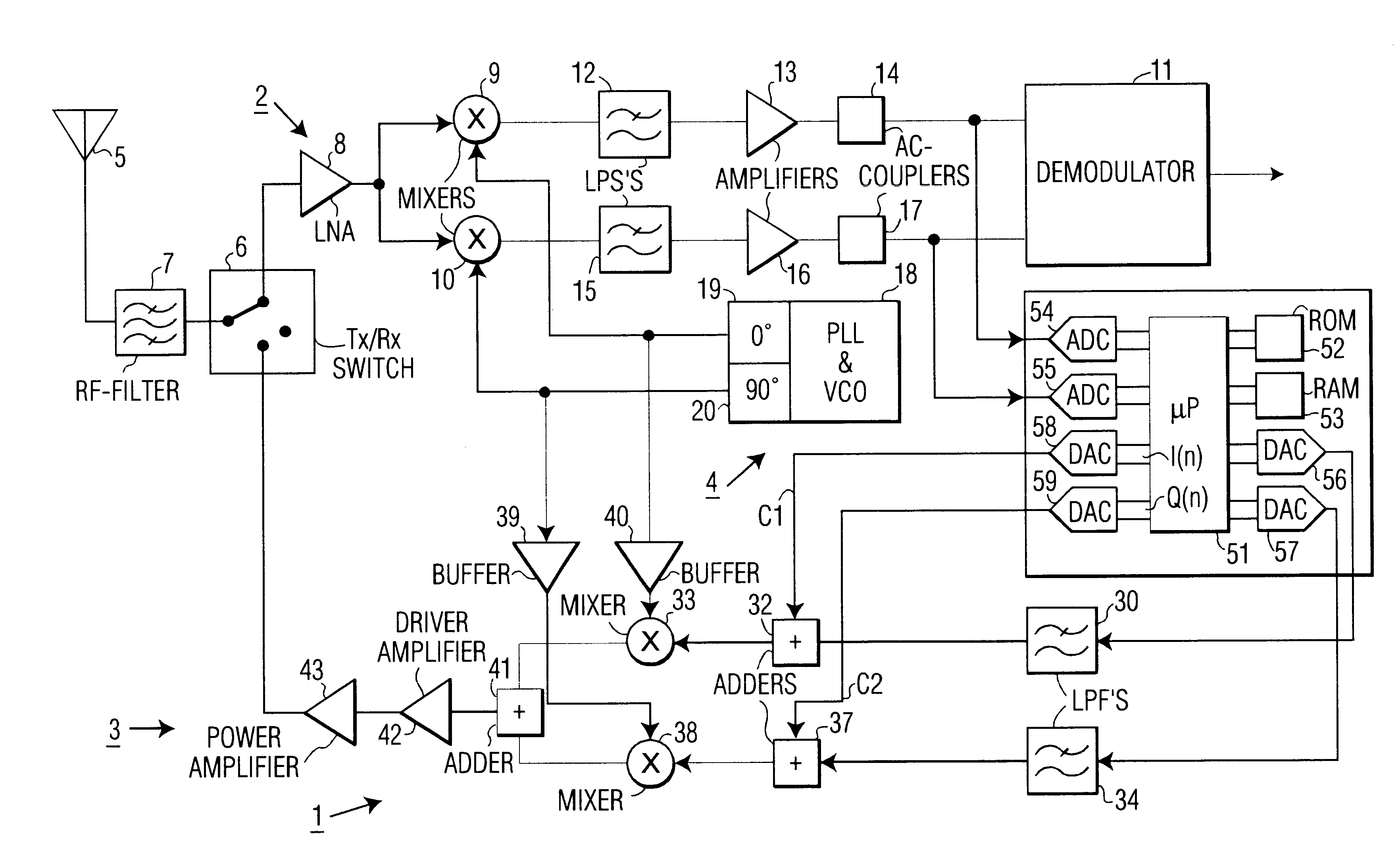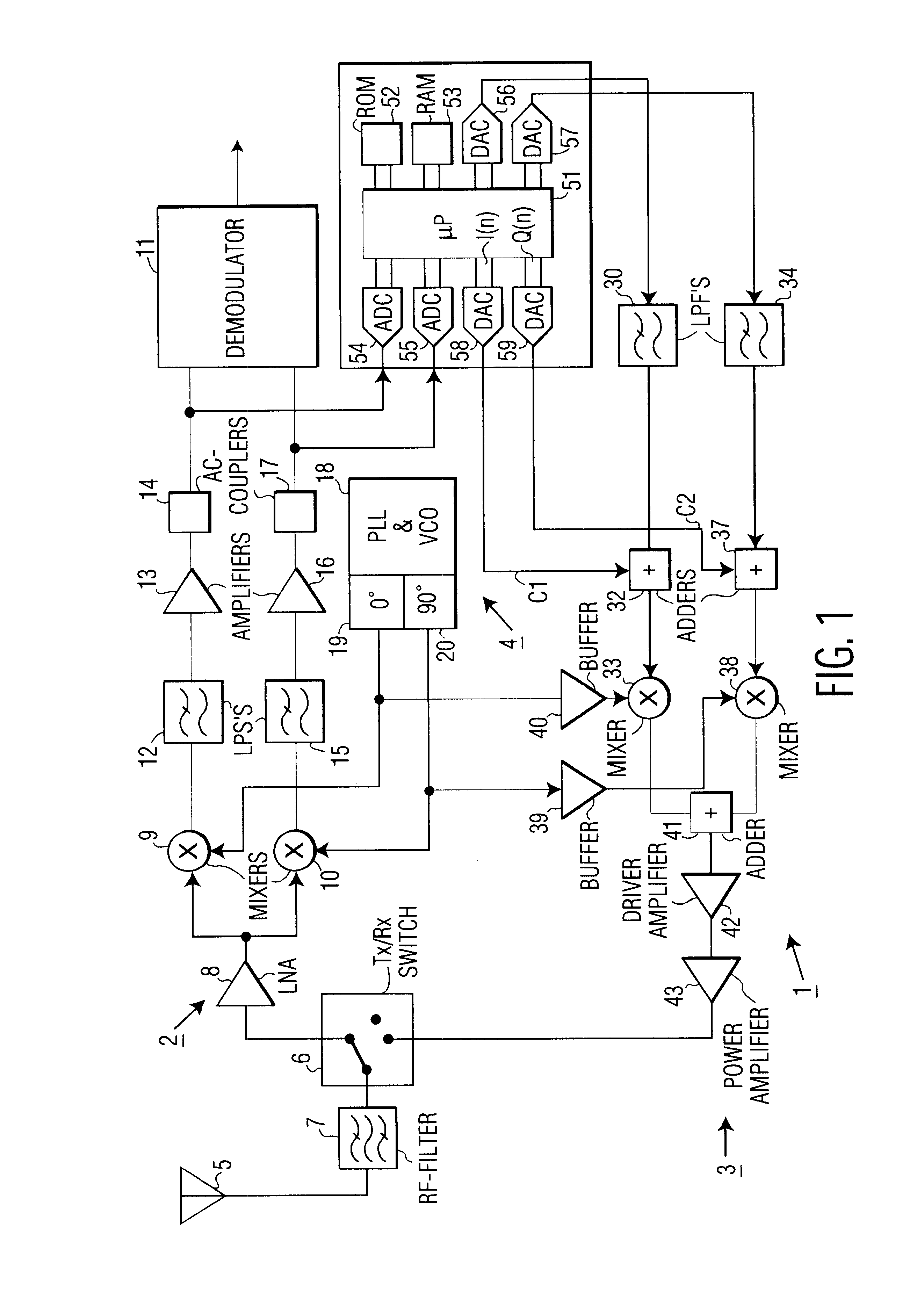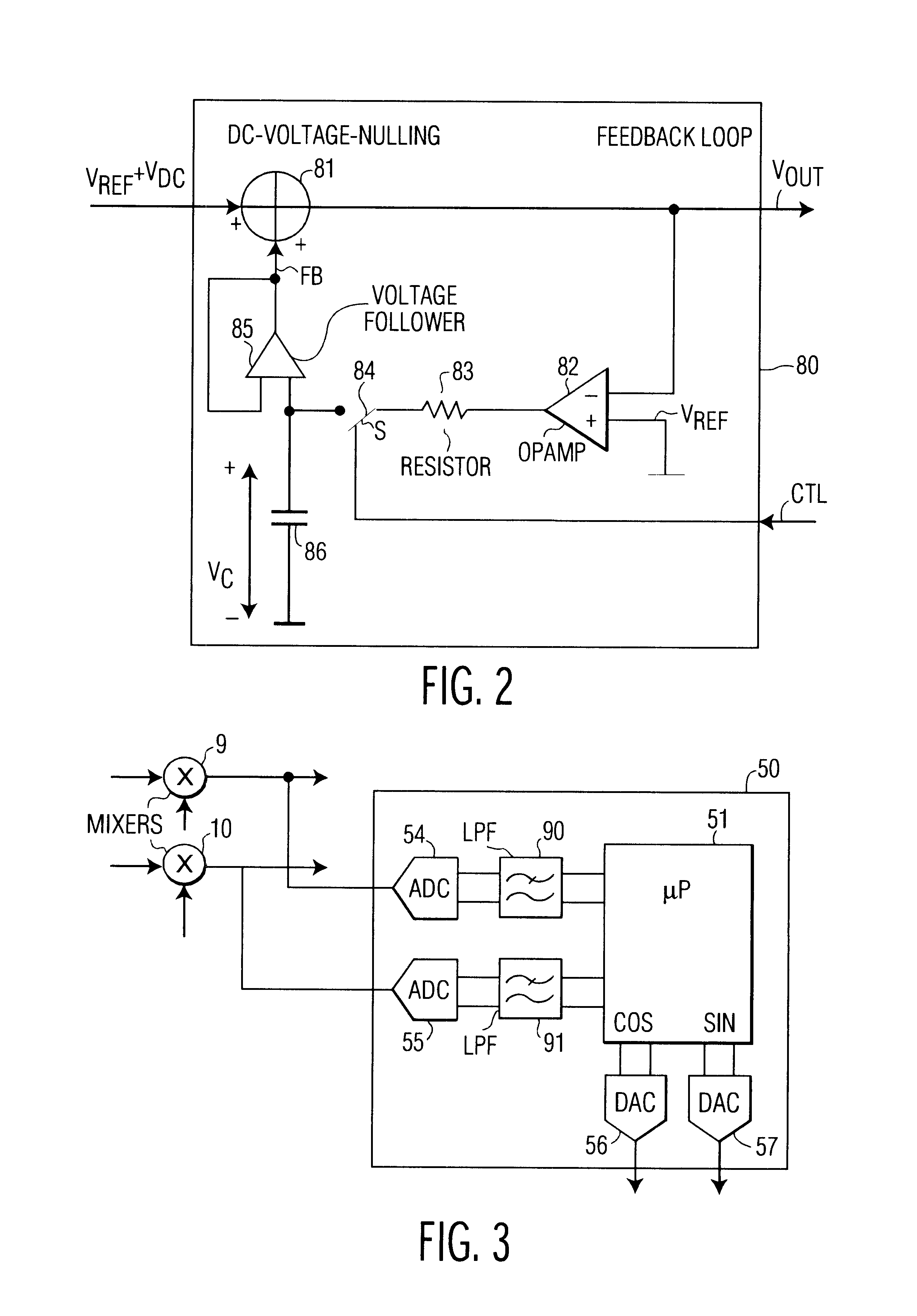Autocalibration of a transceiver through nulling of a DC-voltage in a receiver and injecting of DC-signals in a transmitter
a transceiver and autocalibration technology, applied in the field of transceivers, can solve the problems of transmitter failure to meet modulation spectral emission requirements, uncalibrated transceiver has considerable carrier leakage in the transmitter, and the detector renders the vector modulator more complicated and expensiv
- Summary
- Abstract
- Description
- Claims
- Application Information
AI Technical Summary
Benefits of technology
Problems solved by technology
Method used
Image
Examples
first embodiment
FIG. 1 is a block diagram of a transceiver 1 according to the present invention. The transceiver 1 comprises a receiver 2, a transmitter 3, and a local oscillator 4. The receiver 2 and the transmitter 3 are coupled to an antenna 5 via a transmit / receive switch 6 and an RF-filter 7. The receiver 2 comprises a low-noise amplifier (LNA) 8 that is coupled to a mixer 9 in an in-phase branch and to a mixer 10 in a quadrature branch. The mixer 9 is coupled to a demodulator 11 via a low pass filter (LPF) 12, an amplifier 13, and an AC-coupler 14. The mixer 10 is coupled to the demodulator 11 via a low-pass filter 15, an amplifier 16, and an AC-coupler 17. In accordance with the invention, the AC-couplers 14 and 17 comprise servo or feedback loops that perform DC-nulling of the receiver 2 and that provide a reference signal for calibrating the transmitter 3. As is well-known in the art, the common local oscillator 4 comprises a phase locked loop (PLL) and voltage controlled oscillator (VCO) ...
second embodiment
In the second embodiment, in the block 103, instead of putting a zero-input signal to the quadrature branches of the transmitter, a single tone quadrature signal is inputted, and sampling and determination of equality is done on the basis of averages of signal levels rather than on the basis of signal levels. This has the advantage that inaccuracies in the DACs 56 and 57, such as signal imbalances, are also compensated for.
When non-volatile memory is available for calibration data, calibration of the transmitter 3 may be done during manufaturing of the transceiver 3, possibly at a number of different temperatures. The manufacturer determined calibration values, at different temperatures may be stored in an a lookup table in non-volatile memory. In addition to the described calibration of the transmitter 3, a further calibration may be done when powering-on the transceiver 1, so as to compensate for big temperature changes. The transceiver 1 may then comprise a temperature sensor tha...
PUM
 Login to View More
Login to View More Abstract
Description
Claims
Application Information
 Login to View More
Login to View More - R&D
- Intellectual Property
- Life Sciences
- Materials
- Tech Scout
- Unparalleled Data Quality
- Higher Quality Content
- 60% Fewer Hallucinations
Browse by: Latest US Patents, China's latest patents, Technical Efficacy Thesaurus, Application Domain, Technology Topic, Popular Technical Reports.
© 2025 PatSnap. All rights reserved.Legal|Privacy policy|Modern Slavery Act Transparency Statement|Sitemap|About US| Contact US: help@patsnap.com



